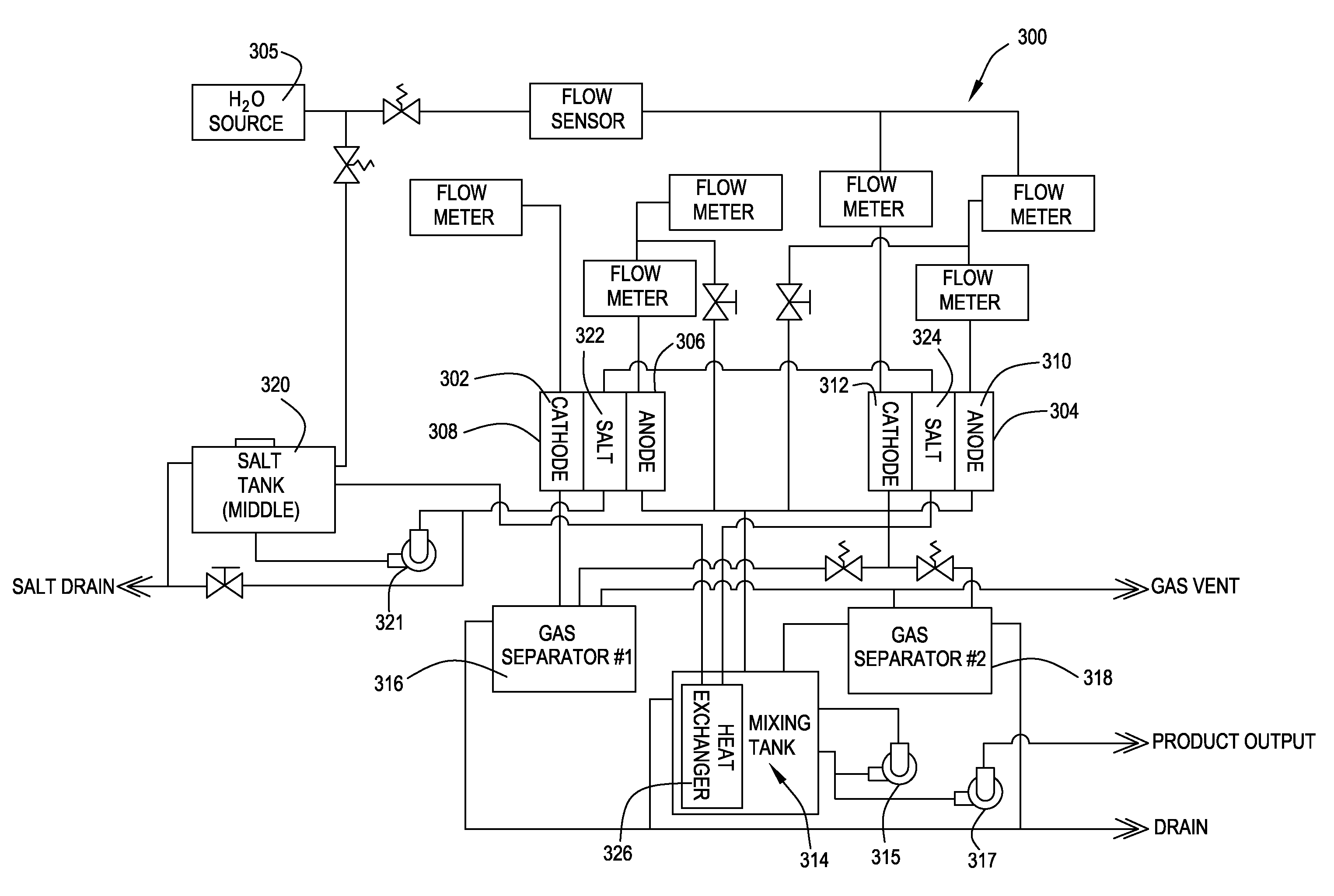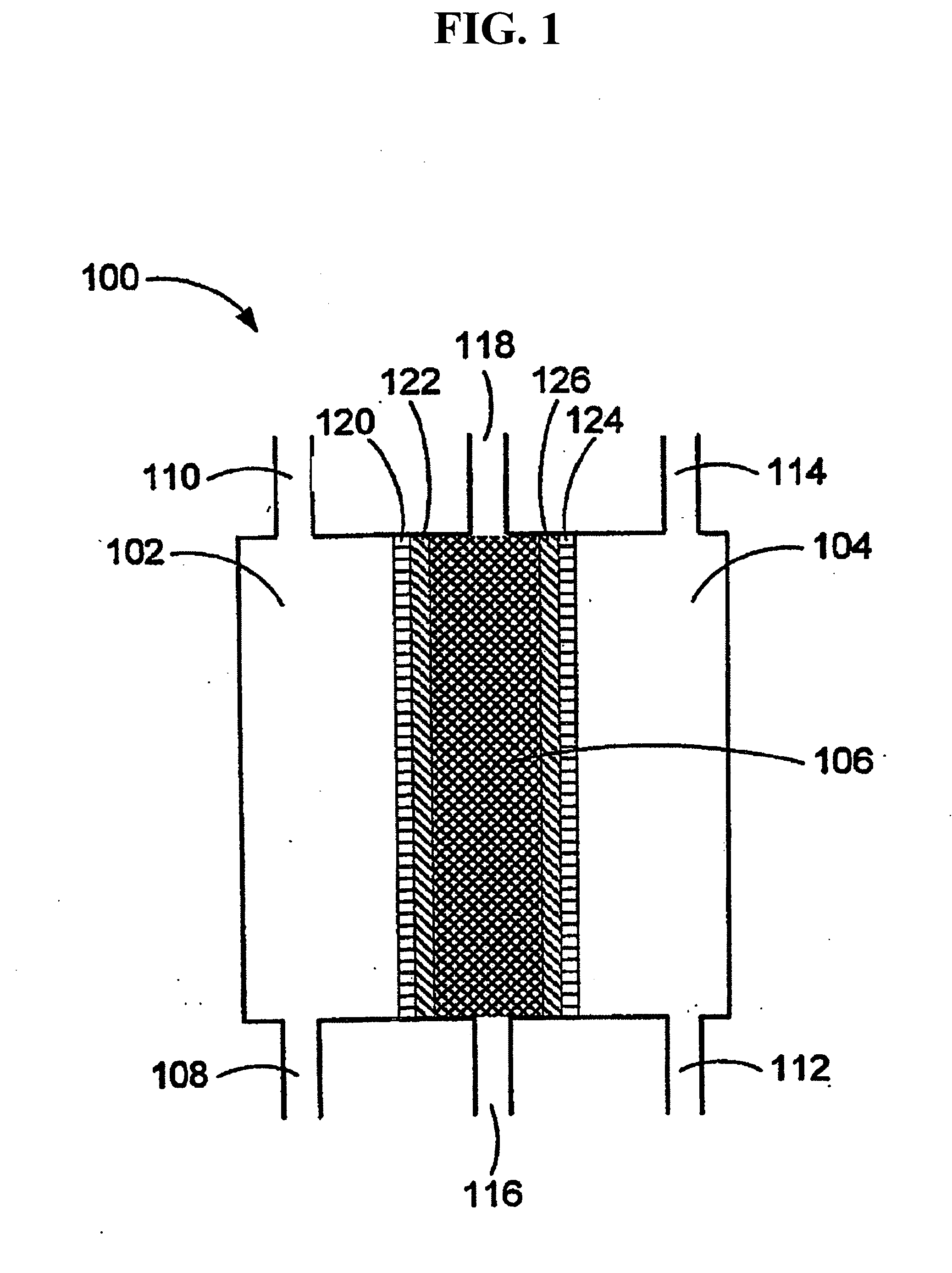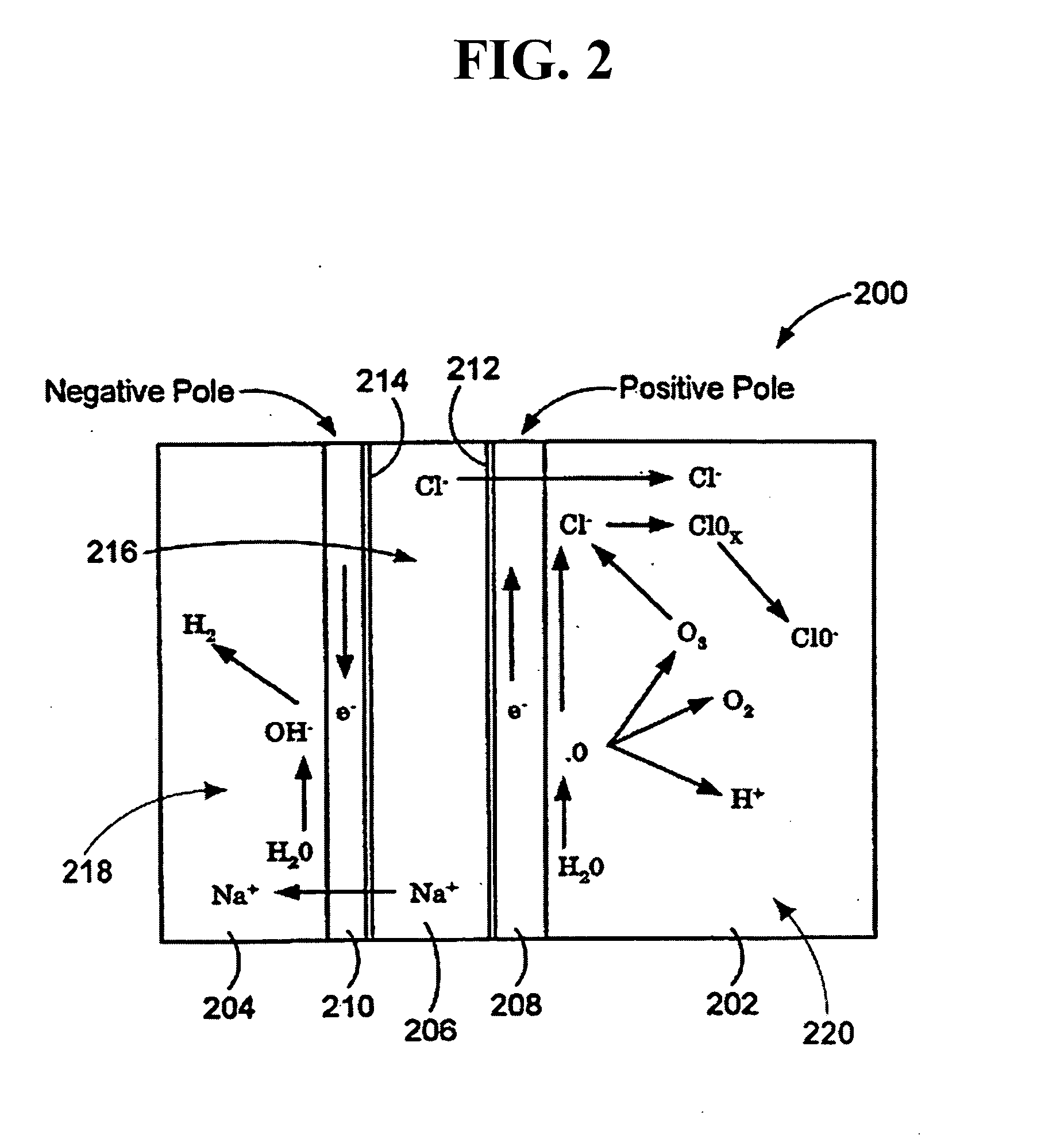Methods of preventing or treating sinusitis with oxidative reductive potential water solution
a technology of oxidative reductive potential and water solution, which is applied in the direction of antibacterial agents, drug compositions, immunological disorders, etc., can solve the problems of increasing mucus production and congestion of the nasal passages, causing the individual to develop bacterial sinusitis, and being harmless to healthy people, so as to prevent or treat sinusitis, the effect of treating or preventing sinusitis
- Summary
- Abstract
- Description
- Claims
- Application Information
AI Technical Summary
Benefits of technology
Problems solved by technology
Method used
Image
Examples
examples 1-3
[0166] These examples demonstrate the unique features of the ORP water solution used in accordance with the invention. The samples of the ORP water solution in Examples 1-3 were analyzed in accordance with the methods described herein to determine the physical properties and levels of ionic and other chemical species present in each sample. Results obtained for chlorine dioxide, ozone and hydrogen peroxide are based on standard tests used to measure such species but may be indicative of different species, which can also generate positive test results. Further, it has been reported that chlorine dioxide, ozone and hydrogen peroxide react with hypochlorite resulting in their consumption and the production of other compounds (e.g., HCl and O2.) The pH, oxidative-reductive potential (ORP) and ionic species present are set forth in Table 1 for each sample of the ORP water solution.
TABLE 1Physical characteristics and ion species presentfor the ORP water solution samplesEXAMPLE 1EXAMPLE ...
examples 4-10
[0168] These examples demonstrate the addition of a bleaching agent to the ORP water solution according to the invention in various amounts. In particular, these examples demonstrate the antimicrobial activity and fabric bleaching ability of the compositions.
[0169] A 10% Clorox® bleach solution was prepared using distilled water. The following solutions were then prepared using the 10% bleach solution: 80% ORP water solution / 20% bleach (Example 4); 60% ORP water solution / 40% bleach (Example 5); 40% ORP water solution / 60% bleach (Example 6); 20% ORP water solution / 80% bleach (Example 7); and 0% ORP water solution / 100% bleach (Example 8). Two control solutions were also used for comparison including 100% ORP water solution / 0% bleach (Example 9) and an ORP water solution with 0.01% Tween 20 detergent (Example 10). The physical characteristics of these samples were determined, specifically pH, oxidative-reductive potential (ORP), total chlorine (Cl—) content, and hypochlorous acid (HCl...
example 11
[0175] The purpose of this study was to assess the safety of the test an exemplary ORP water solution, Microcyn, when administered as drops into the nasal cavity of rabbits. Thirty-three rabbits were randomly assigned to two groups, Groups I and II. Group I (18 animals) served as the control group and Group II (15 animals) was dosed with the test article. On Day −1 or Day 0, body weights were recorded and blood samples were, collected for analysis of selected parameters. On Day 0, 500 μL of sterile saline was administered to the Group I animals and 500 μL of the test article (at a 50% concentration) was administered to Group n annuals. Both the control and the test articles were administered twice daily as drops into the right nostril. The animals were dosed in the same manner on Days 1-6. Animals were observed daily for signs of pharmacologic and / or toxicologic effects with special attention paid to the nose. Body weights were recorded weekly through study termination. On Day 7, on...
PUM
 Login to View More
Login to View More Abstract
Description
Claims
Application Information
 Login to View More
Login to View More - R&D
- Intellectual Property
- Life Sciences
- Materials
- Tech Scout
- Unparalleled Data Quality
- Higher Quality Content
- 60% Fewer Hallucinations
Browse by: Latest US Patents, China's latest patents, Technical Efficacy Thesaurus, Application Domain, Technology Topic, Popular Technical Reports.
© 2025 PatSnap. All rights reserved.Legal|Privacy policy|Modern Slavery Act Transparency Statement|Sitemap|About US| Contact US: help@patsnap.com



